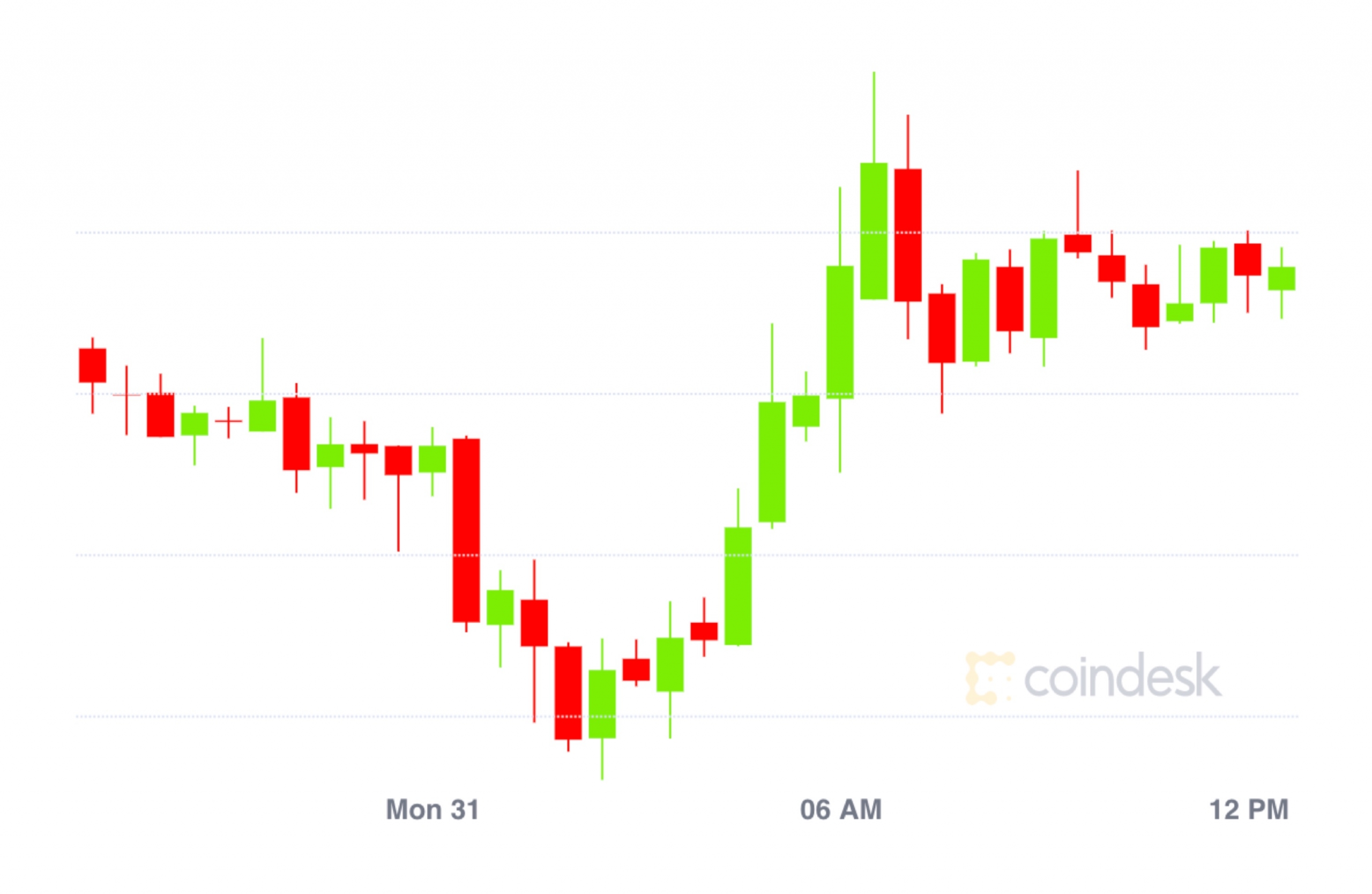Bitcoin Rallies After Biggest Weekly Drop Since November
View
- Bitcoin produced a doji candle on Sunday, neutralizing the immediate bearish setup.
- A UTC close above Sunday’s high of $8,756 would validate the seller exhaustion signaled by the candle and potentially yield a test of key resistance at $9,500.
- Chart-driven selling could gather pace if prices fail to defend Sunday’s low of $8,410, leading to a deeper sell-off to support levels at $8,213 and $8,200.
Bitcoin (BTC) is flashing green on Monday, having suffered a double-digit price drop last week.
The top cryptocurrency is currently trading over $8,740, representing a 1.9 percent gain on a 24-hour basis, according to CoinDesk’s Bitcoin Price Index.
The news will be welcomed by bitcoin’s bulls, as prices fell by 13 percent in the seven days to March 1, registering the biggest weekly loss since the third week of November. Back then, the cryptocurrency dropped by 18.7 percent over the same period.
Equity markets across the globe also fell sharply last week as investors shunned risk on fears the coronavirus pandemic will cause a serious slowdown in the global economy.
The S&P 500, Wall Street’s benchmark stock index, fell for the seventh straight day on Friday. The sell-off wiped out five months of the rally from 2,855 to 3,393. Even so, the index outperformed bitcoin on a weekly basis with an 11 percent drop.

Despite last week’s drop, bitcoin is still outperforming both gold and the S&P 500 on a year-to-date basis with 20 percent gains. Meanwhile, ethereum’s ether (ETH) token, the second-largest cryptocurrency by market value, has rallied 74 percent so far this year.
Liquidity source?
Bitcoin fell last week as investors liquidated their holdings to fund margin calls triggered by the stock market crash, according to billionaire investor and Galaxy Digital founder Micheal Novogratz.
A margin call occurs when the value of the investor’s leverage account drops below the minimum margin requirement. The investor is then required to bring in additional capital or securities to build back the account up to the minimum margin requirement.
Essentially, Novogratz thinks bitcoin served as a source of liquidity last week, having apparently found a role as a safe haven in January when prices rose by 30 percent amid the U.S. Iran tensions and the beginnings of the coronavirus outbreak in China.
Currently, there is no evidence to prove that margin call-related selling fueled bitcoin’s price drop. That possibility, however, cannot be ruled out altogether, as perceived safe havens like gold are often used as source of liquidity.
Gold, a classic anti-risk asset, fell by 4 percent last week – also the biggest weekly loss since November – reportedly due to margin calls.
At press time, the metal is changing hands at $1,610 per ounce – up 3 percent from Friday’s low of $1,563.
As bitcoin also gains ground, the bulls need a close above Sunday’s high to maintain the rally.
Daily chart

Bitcoin created a doji candle on Sunday, signaling seller exhaustion. A UTC close above Sunday’s high of $8,756 would validate the doji candle and confirm an end of the pullback from the recent highs above $10,500.
A bullish close could bring additional gains towards the former support-turned-resistance of the head-and-shoulders neckline at $9,500.
Alternatively, if prices find acceptance under Sunday’s low of $8,410, a bearish doji continuation pattern would be confirmed and a deeper drop to $8,213 (Feb. 24 low) and possibly to $8,000 may be seen.
Disclosure: The author holds no cryptocurrency at the time of writing
Disclosure Read More
The leader in blockchain news, CoinDesk is a media outlet that strives for the highest journalistic standards and abides by a strict set of editorial policies. CoinDesk is an independent operating subsidiary of Digital Currency Group, which invests in cryptocurrencies and blockchain startups.









